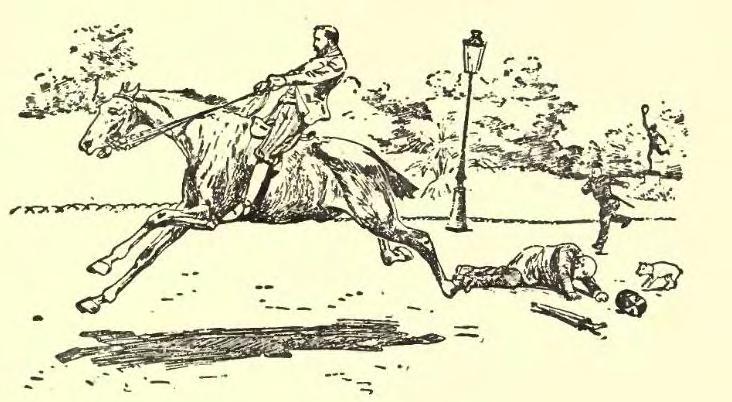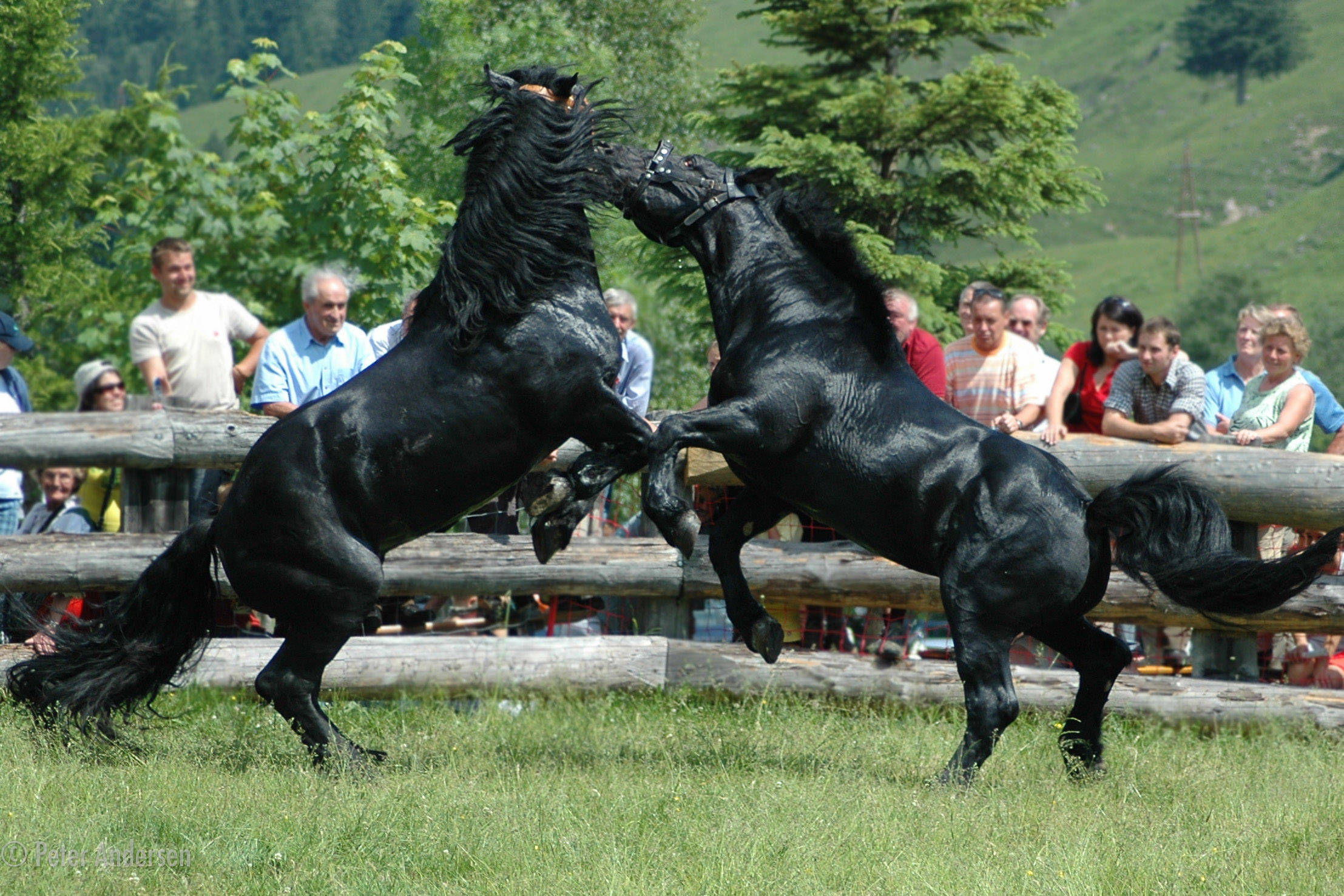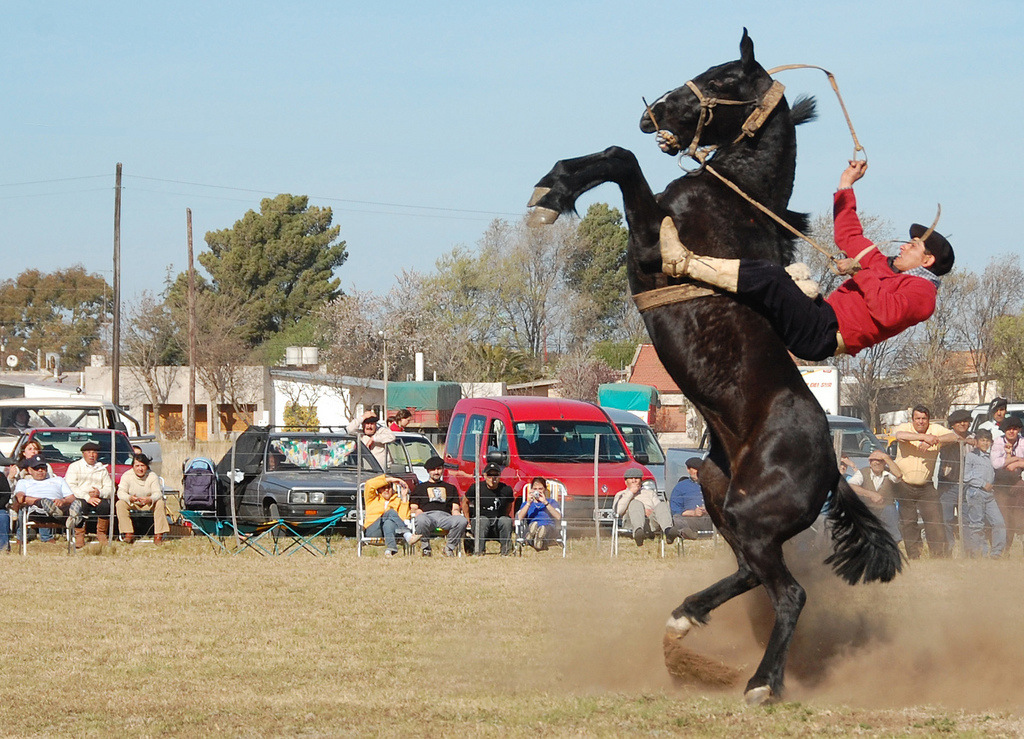|
Stable Vices
Stable vices are stereotypies of equines, especially horses. They are usually undesirable habits that often develop as a result of being confined in a stable with boredom, hunger, isolation, excess energy, or insufficient exercise. They present a management issue, not only leading to facility damage from chewing, kicking, and repetitive motion, but also leading to health consequences for the animal if not addressed. They also raise animal welfare concerns. Stereotypical behaviors in animals are generally thought to be caused by artificial environments that do not allow animals to satisfy their normal behavioral needs. Rather than refer to these behaviors as abnormal, it has been suggested that they be described as "behavior indicative of an abnormal environment". It was once thought that stable vices may be learned by observing other horses already performing the behaviors, but studies on the topic to date have failed to establish this as a cause. Stereotypies are correlated ... [...More Info...] [...Related Items...] OR: [Wikipedia] [Google] [Baidu] |
Bolting (horse)
Bolting, when referring to equids, generally refers to two equine behaviors, both undesirable: * Running away without control. * Eating food at a dangerously fast rate. However, there are other meanings as well. For example, in Australia a ''bolter'' is a racehorse that wins at long betting odds. Runaways Most often, bolting refers to a "runaway" - horses that gallop off with a handler at high speed, whether being ridden under saddle or driving in harness. There are many causes, most linked to fright that triggers the fight-or-flight response of the horse. In these circumstances, the horse is often running in a panic and may not notice where it is going, creating danger for both horse and rider. Less often, bolting is a deliberate disobedience by a horse that wishes to rid itself of a handler or avoid an unpleasant situation. In both cases, bolting horses are usually stopped by being turned in some type of circle by pulling on one rein to turn the head to the side, as directly pu ... [...More Info...] [...Related Items...] OR: [Wikipedia] [Google] [Baidu] |
Horse Behavior
Horse behavior is best understood from the view that horses are prey animals with a well-developed fight-or-flight response. Their first reaction to a threat is often to flee, although sometimes they stand their ground and defend themselves or their offspring in cases where flight is untenable, such as when a foal would be threatened. Nonetheless, because of their physiology horses are also suited to a number of work and entertainment-related tasks. Humans domesticated horses thousands of years ago, and they have been used by humans ever since. Through selective breeding, some breeds of horses have been bred to be quite docile, particularly certain large draft horses. On the other hand, most light horse riding breeds were developed for speed, agility, alertness, and endurance; building on natural qualities that extended from their wild ancestors. Horses' instincts can be used to human advantage to create a bond between human and horse. These techniques vary, but are part of ... [...More Info...] [...Related Items...] OR: [Wikipedia] [Google] [Baidu] |
Horse Care
There are many aspects to horse management. Horses, ponies, mules, donkeys and other domesticated equids require attention from humans for optimal health and long life. Living environment Horses require both shelter from natural elements like wind and precipitation, as well as room to exercise. Worldwide, horses and other equids usually live outside with access to shelter for protection from the elements. In some cases, animals are kept in a barn or stable for ease of access by managers, or for protection from the weather for various reasons. For horse owners who do not own their own land, fields and barns can be rented from a private land owner or space for an individual horse may be rented from a boarding farm. Horses that are not on full-time turnout in a field or pasture normally require some form of regular exercise, whether it is being ridden, longed or turned out for free time. However, if a horse is ill or injured it may need to be confined to a stable, usually in a ... [...More Info...] [...Related Items...] OR: [Wikipedia] [Google] [Baidu] |
Horse Colic
Colic in horses is defined as abdominal pain, but it is a clinical symptom rather than a diagnosis. The term colic can encompass all forms of gastrointestinal conditions which cause pain as well as other causes of abdominal pain not involving the gastrointestinal tract. The most common forms of colic are gastrointestinal in nature and are most often related to colonic disturbance. There are a variety of different causes of colic, some of which can prove fatal without surgical intervention. Colic surgery is usually an expensive procedure as it is major abdominal surgery, often with intensive aftercare. Among domesticated horses, colic is the leading cause of premature death. The incidence of colic in the general horse population has been estimated between 4 and 10 percent over the course of the average lifespan. Clinical signs of colic generally require treatment by a veterinarian. The conditions that cause colic can become life-threatening in a short period of time. Pathophysiolog ... [...More Info...] [...Related Items...] OR: [Wikipedia] [Google] [Baidu] |
Rearing (horse)
Rearing occurs when a horse or other equine "stands up" on its hind legs with the forelegs off the ground. Rearing may be linked to fright, aggression, excitement, disobedience, non experienced rider, or pain. It is not uncommon to see stallions rearing in the wild when they fight, while striking at their opponent with their front legs. Mares are generally more likely to kick when acting in aggression, but may rear if they need to strike at a threat in front of them. When a horse rears around people, in most cases, it is considered a dangerous habit for riding horses, as not only can a rider fall off from a substantial height, but also because it is possible for the animal to fall over backwards, which could cause injuries or death to both horse and rider. It is therefore strongly discouraged. A horse that has a habit of rearing generally requires extensive retraining by an experienced horse trainer, and if the habit cannot be corrected, they horse may be deemed too dangerou ... [...More Info...] [...Related Items...] OR: [Wikipedia] [Google] [Baidu] |
Bucking
Bucking is a movement performed by an animal in which it lowers its head and raises its hindquarters into the air while kicking out with the hind legs. It is most commonly seen in herbivores such as equines, cattle, deer, goats, and sheep. Most research on this behavior has been directed towards horses and cattle. Bucking can vary in intensity from the animals’ slight elevation of both hind legs, to lowering their head between their front legs, arching their back, and kicking out several times. Originally, it was predominantly an anti-predator and play behavior, but with domestication, it is now also a behavioral issue in riding horses, and a desired behavior in bucking bulls. If powerful, it may unseat a rider enough to fall off. Bucking, in some cases, may have consequences for serious injury to animal and rider. Reasons for bucking Bucking, though a potentially dangerous disobedience when under saddle, is a natural aspect of horse behavior. Bucking is used by animals fo ... [...More Info...] [...Related Items...] OR: [Wikipedia] [Google] [Baidu] |
Horse Penis
A stallion is a male horse that has not been gelded (castrated). Stallions follow the conformation and phenotype of their breed, but within that standard, the presence of hormones such as testosterone may give stallions a thicker, "cresty" neck, as well as a somewhat more muscular physique as compared to female horses, known as ''mares'', and castrated males, called '' geldings''. Temperament varies widely based on genetics, and training, but because of their instincts as herd animals, they may be prone to aggressive behavior, particularly toward other stallions, and thus require careful management by knowledgeable handlers. However, with proper training and management, stallions are effective equine athletes at the highest levels of many disciplines, including horse racing, horse shows, and international Olympic competition. "Stallion" is also used to refer to males of other equids, including zebras and donkeys. Herd behavior Contrary to popular myths, many stallions do ... [...More Info...] [...Related Items...] OR: [Wikipedia] [Google] [Baidu] |
Gelding
A gelding is a castrated male horse or other equine, such as a pony, donkey or a mule. Castration, as well as the elimination of hormonally driven behavior associated with a stallion, allows a male equine to be calmer and better-behaved, making the animal quieter, gentler and generally more suitable as an everyday working animal. The gerund and participle "gelding" and the infinitive "to geld" refer to the castration procedure itself. Etymology The verb "to geld" comes from the Old Norse , from the adjective 'barren'. The noun "gelding" is from the Old Norse . History The Scythians are thought to have been the first people to geld their horses. They valued geldings as war horses because they were quiet, lacked mating urges, were less prone to call out to other horses, were easier to keep in groups, and were less likely to fight with one another. Reasons for gelding A male horse is often gelded to make him better-behaved and easier to control. Gelding can also remove lower ... [...More Info...] [...Related Items...] OR: [Wikipedia] [Google] [Baidu] |
Stallion (horse)
A stallion is a male horse that has not been gelded (castrated). Stallions follow the conformation and phenotype of their breed, but within that standard, the presence of hormones such as testosterone may give stallions a thicker, "cresty" neck, as well as a somewhat more muscular physique as compared to female horses, known as ''mares'', and castrated males, called ''geldings''. Temperament varies widely based on genetics, and training, but because of their instincts as herd animals, they may be prone to aggressive behavior, particularly toward other stallions, and thus require careful management by knowledgeable handlers. However, with proper training and management, stallions are effective equine athletes at the highest levels of many disciplines, including horse racing, horse shows, and international Olympic competition. "Stallion" is also used to refer to males of other equids, including zebras and donkeys. Herd behavior Contrary to popular myths, many stallions do not ... [...More Info...] [...Related Items...] OR: [Wikipedia] [Google] [Baidu] |
Non-reproductive Sexual Behavior In Animals
Non-reproductive sexual behavior consists of sexual activities Human sexual activity, human sexual practice or human sexual behaviour is the manner in which humans experience and express their sexuality. People engage in a variety of sexual acts, ranging from activities done alone (e.g., masturbation) t ... animals participate in that do not lead to the reproduction of the species. Although procreation continues to be the primary explanation for animal sexual behavior, sexual behavior in animals, recent observations on animal behavior have given alternative reasons for the engagement in sexual activities by animals. Animals have been observed to engage in sex for social interaction bonding, exchange for significant materials, affection, mentorship pairings, sexual enjoyment, or as demonstration of dominance (ethology), social rank. Observed non-procreative sexual activities include non-copulatory mounting (without insertion, or by a female, or by a younger male who does not ... [...More Info...] [...Related Items...] OR: [Wikipedia] [Google] [Baidu] |









_(6011903243).jpg)